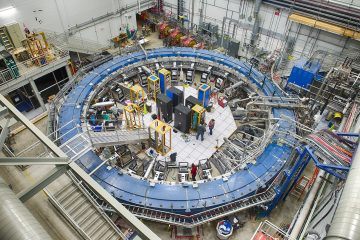Sabine Hossenfelder in Back Reaction:
 Physicists count 25 elementary particles that, for all we presently know, cannot be divided any further. They collect these particles and their interactions in what is called the Standard Model of particle physics.
Physicists count 25 elementary particles that, for all we presently know, cannot be divided any further. They collect these particles and their interactions in what is called the Standard Model of particle physics.
But the matter around us is made of merely three particles: up and down quarks (which combine to protons and neutrons, which combine to atomic nuclei) and electrons (which surround atomic nuclei). These three particles are held together by a number of exchange particles, notably the photon and gluons.
What’s with the other particles? They are unstable and decay quickly. We only know of them because they are produced when other particles bang into each other at high energies, something that happens in particle colliders and when cosmic rays hit Earth’s atmosphere. By studying these collisions, physicists have found out that the electron has two bigger brothers: The muon (μ) and the tau (τ).
The muon and the tau are pretty much the same as the electron, except that they are heavier. Of these two, the muon has been studied closer because it lives longer – about 2 x 10-6 seconds.
The muon turns out to be… a little odd.
More here.
